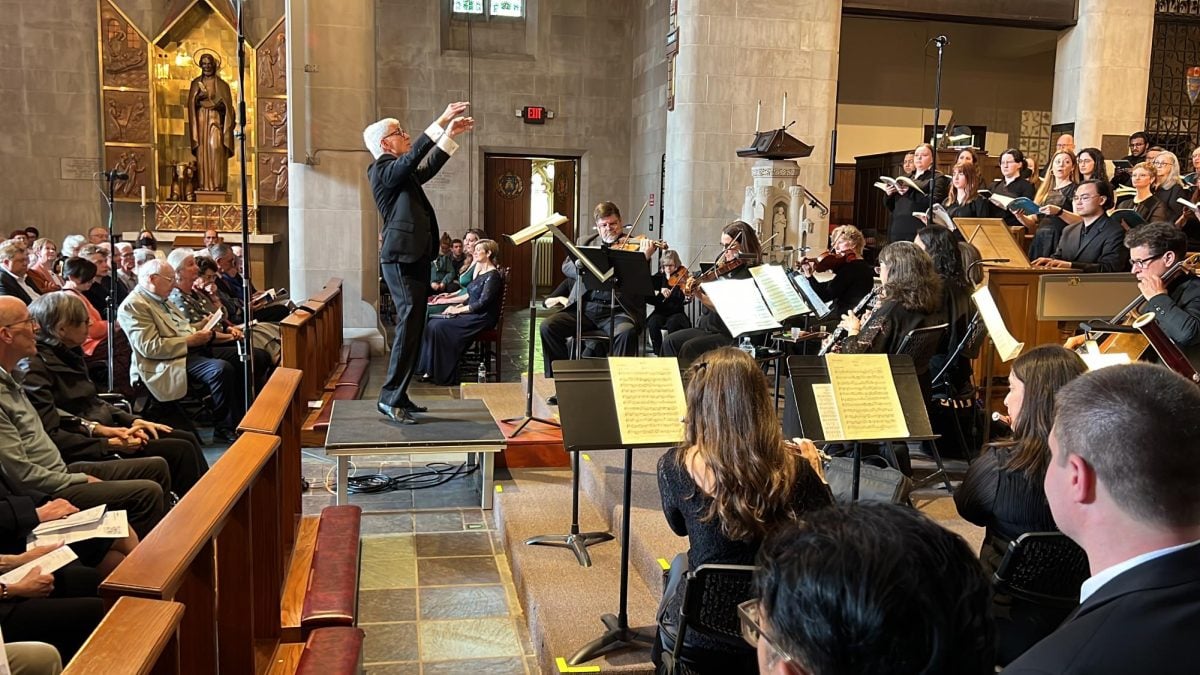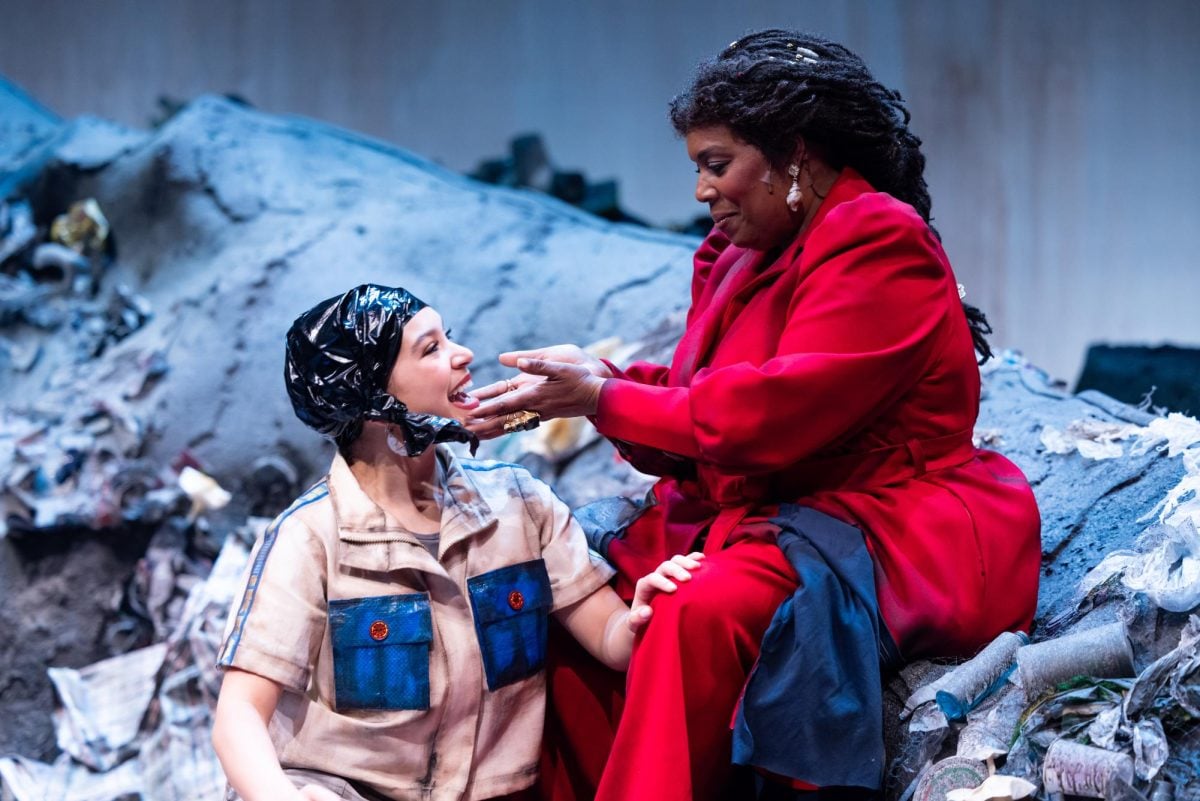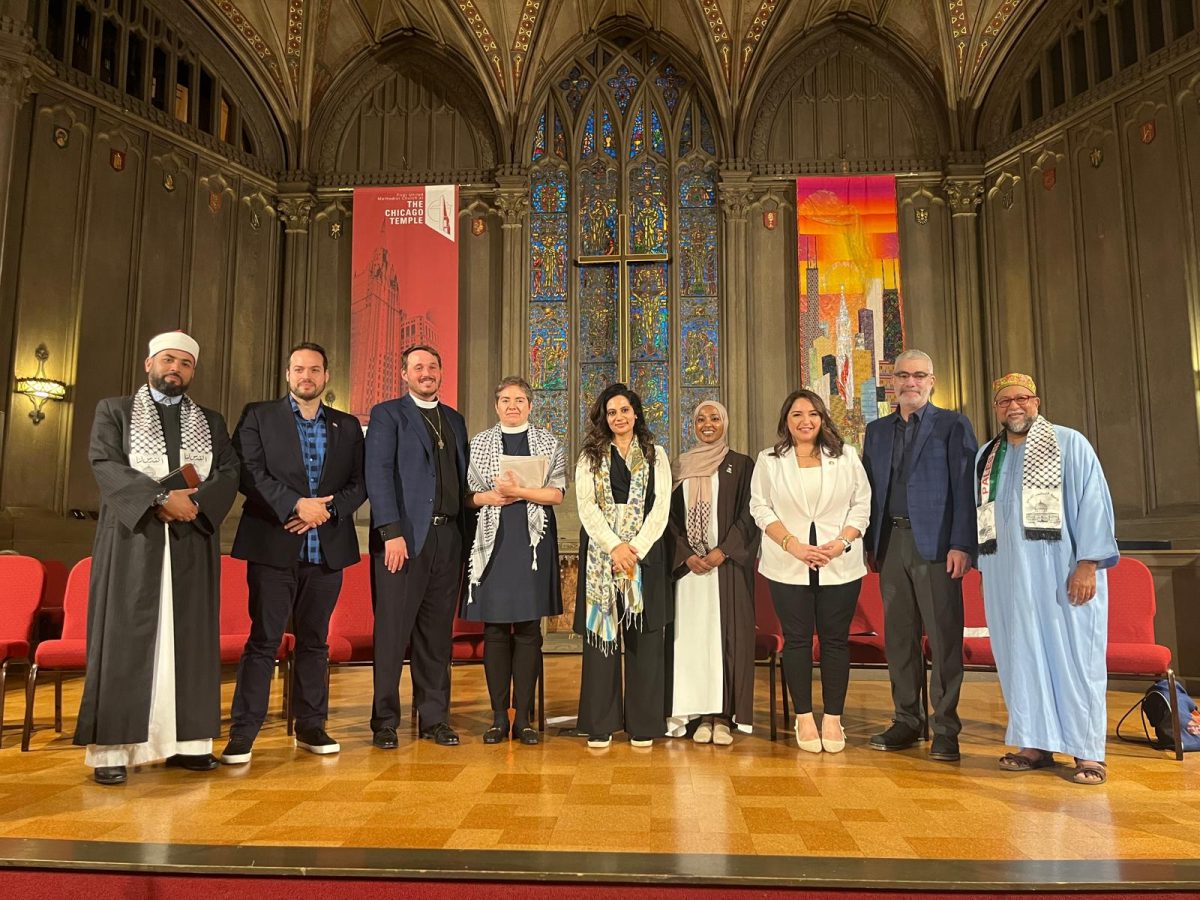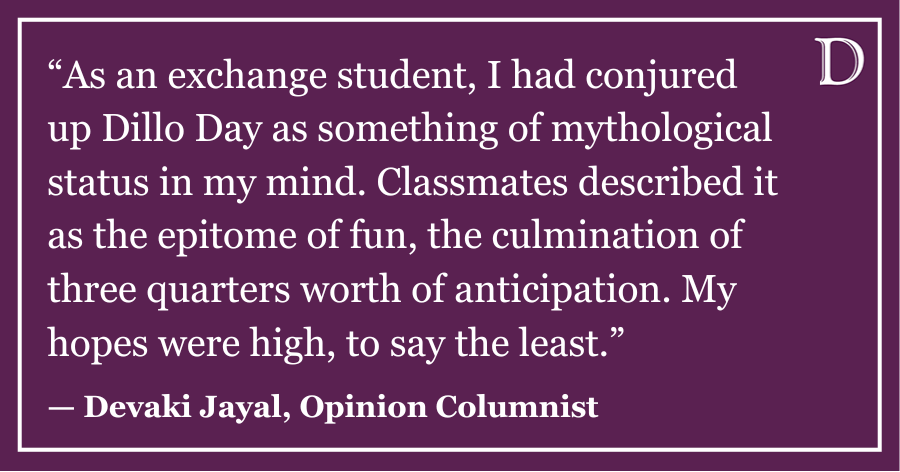Classical music enthusiasts flocked to St. Luke’s Episcopal Church in Evanston on Sunday for the final concert of the 50th annual Bach Week Festival. As the name suggests, Bach Week is a festival that celebrates the music of Johann Sebastian Bach and his colleagues. The 2024 edition marked its final season.
Prior to the concert, the festival’s longtime conductor, Richard Webster, gave a speech on the history of the festival and expressed his gratitude to the audience and organizers. Audience and chorus members alike accompanied the mighty organ chords of “Praise to the Lord, the Almighty,” a celebratory hymn, to start the show.
The pre-concert silence broke with thunderous applause as Webster returned confidently onto the stage, along with five vocal soloists, to perform Bach’s “Mass in B minor.” Considering it’s arguably Bach’s most widely-renowned piece, it was a momentous occasion.
The orchestra guided itself through some of Bach’s lightest and densest textures in the opening “Kyrie and Gloria” section, consisting of twelve pieces. The collective sound of the chorus was towering, the two soprano soloists displayed exemplary clarity in their runs. With the only lyrics consisting of the phrases “Kyrie eleison” and “Christe eleison,” Bach seemed to consider the chorus as just another instrument of the orchestra. Indeed, the timbre of the vocal lines blended in with the instrumental lines.
The “Gloria in excelsis” introduced exalting trumpet fanfares, with the chorus singing vigorously and detached, just as Bach likely intended. The sound of the orchestra was grand but never overdone.
However, some of the style choices raised questions. The string players tended to vibrate their strings, a technique that was not yet widespread in Bach’s time, making the sound richer than perhaps what Bach had in mind. This was especially apparent in “Qui tollis peccata mundi,” where the richness of the sound sometimes interfered with the sense of solemnity. In many places, the distinction between soft and loud dynamics could have also been clearer and more consistent with the concept of “terraced dynamics” in Baroque music.
Some pieces required key instrumentalists, along with the vocal soloists, to lead the rest of the orchestra. However, the orchestra’s decision to bring these instrumental soloists to the front of the stage with the vocal soloists did not seem historically informed. This physical shift sometimes caused over-projection of the soloists’ sound that disturbed the orchestral texture compared to many previously recorded versions of the Mass. In “Laudamus te,” the main violin line was curiously replaced with a flute, which created a lighter tone that provided some respite from the imposing music that came before.
After the intermission, the orchestra was off to an energetic start to the “Credo.” As the lyrics begin to tell the story of the conception and crucifixion of Jesus Christ, the energy was replaced with sorrowful expression and solemnity, in which the choir brought out its deepest and darkest tone colors yet. Elation came suddenly in the “Et resurrexit,” with the trumpets once again accentuating the strings and chorus. All throughout, the orchestra distinctively colored some of Bach’s most daring harmonies.
The relaxed tempo in the “Sanctus” brought alive the stately, almost march-like rhythms that gave way to livelier music featuring Bach’s signature intricate layers of melodies. This complexity is a large part of the beauty of Bach’s music, and the orchestra wonderfully highlighted the elegance within that complexity. The “Osanna” was also largely in the mood of the “Sanctus,” with the now familiar trumpet fanfares again decorating the dense texture.
The alto soloist in the “Agnus Dei” tended to vibrate her notes, creating an almost sobbing effect that seemed out of style with Bach, especially given the thin yet somber accompaniment. The Mass reached its climax in the final “Dona nobis pacem,” where different melodies in various sections of the choir and orchestra merged and harmonized. The tempo never fluctuated, adding to the sense of mounting majesty that culminated in a grand D-major chord. After the last echoing remnants tapered off, the audience erupted in applause and shouts of “Bravo!”
Webster and the musicians produced an interesting take on one of Baroque music’s greatest works. They received well-deserved applause for not just this performance, but all their performances in every season of the Bach Week Festival. It was a fitting ending to a half-century-long tradition that has surely left an indelible legacy on Evanston’s music scene.
Email: [email protected]
Related Stories:
—Bach Week Festival returns to Evanston for 50th, final anniversary
—NUSO and NU Choral program perform two major works at combined concert
—From the wings: Sergei Babayan opens final season of Bach Week with eclectic recital



















